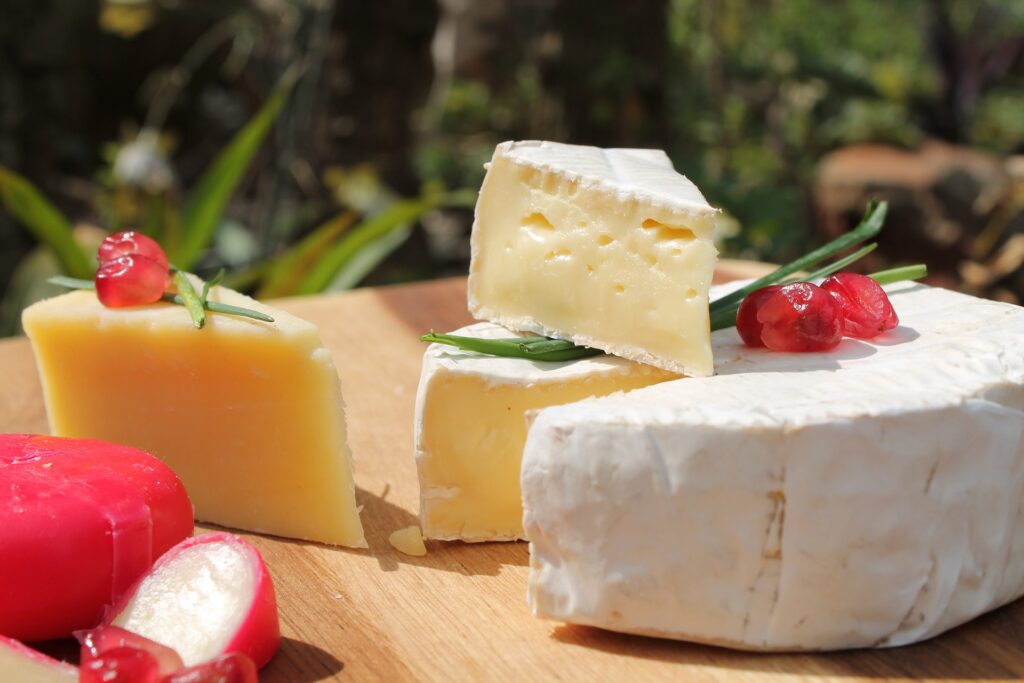
Greg Kinate began his career in cheese production in the 1970s. Over the last 50 years, he has worked with influential players like Kraft and Sargento, started a cheese marketing company that branched out into production and packaging, and later worked as a procurement manager. He holds a WI Cheese Graders License and has worked as a cheese inspector, cheese grader, and cheese contest judge. Today, he grades the cheese in Jacoby’s warehouses and runs functionality tests on new products.
And he’s got lots of tactical advice for the next generation of procurement managers. We sat Greg down to mine his deep technical knowledge for four things your cheese trader should know.
It’s not your grandpa’s cheese industry
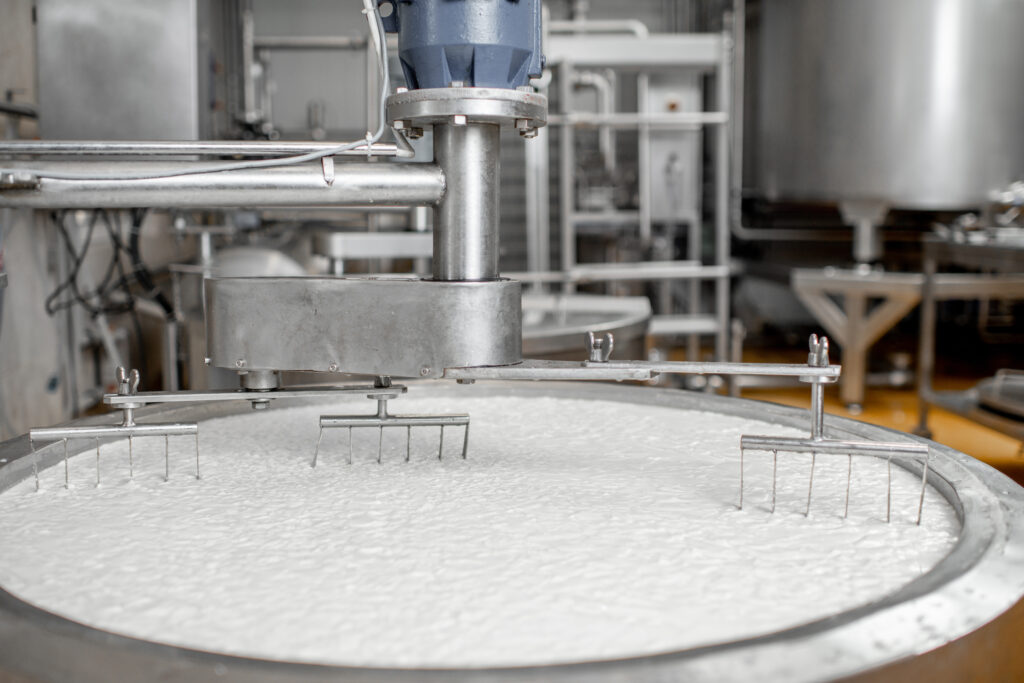
Technology has come for cheese production. New membrane technologies help purify milk and remove regional flavors. Plus, automation has had a huge impact on the industry, from rennet to sale.
In the first step, cheesemakers add rennet to milk to cause it to thicken. In the past, a person would use their judgment to determine when to proceed with cutting the curds. Now, most cheesemakers automate this process. Machines stir the mixture before cutting the curds at a pre-determined time. Curds are placed into large vats or containers and heated so that the whey stream will drain.
Today’s vats are larger. “Some of the vats out there now are 14,000 pounds of cheese. Three vats make up a truckload,” says Greg. “When I started, typically nine to 10 vats made up a load.” The increased size of today’s vats poses a challenge for cheese graders, who are tasked with grading only a percentage of each vat. Today’s larger vats are a challenge for cheese graders who only grade a certain percentage of each vat. Cheese from different areas of the vat may exhibit varying qualities.
In the past, many salespeople had prior knowledge of the cheese industry. According to Greg, “Back when I started in the 1970s, cheesemakers themselves often marketed their own products.” That has changed. Many newcomers in the industry are not as familiar with the technical characteristics of the products they sell or how they were made. “Companies like Jacoby have the expertise and experience to fill that gap,” says Greg.
Certificates of Analysis (COAs) and specifications are important tools for any cheese buyer, but they can’t tell you everything. For example, higher moisture within the specification range may indicate that the batch or vat may be on the softer side. Upon evaluation, it may not be that pronounced. In addition, a lower Ph typically means higher acid and a shorter, chalky body. But further grading may find it acceptable for all uses, or for limited uses. “I learned almost from day one,” says Greg, “cheese speaks for itself.”
In adversity, a network is the door to opportunity
Dairy markets are volatile. Weather extremes impact dairy herd health and milk productivity. Changes in trade policy affect prices. Seasonality impacts consumer demand. Freight rate spikes impact food prices.
Additionally, cheese can be a variable product. A cheesemaker may produce a batch that does not have its usual flavor, moisture, or salt profile. Sometimes, an unusual flavor profile is just what one buyer needs. According to Greg, “Cheesemakers know when those times come up, Jacoby does have outlets. So yeah, it is because they’ve been doing it for a while now.”
In Greg’s mind, a network of cheesemakers can be your biggest resource. “I would tell anyone getting into the cheese business with any sort of volume buying to first understand where cheese is being made in the country. Then go down there and figure out who you need to talk to.”
Building a network isn’t just about interesting conversations and handshakes. It’s about gaining an understanding that will give you a competitive advantage.
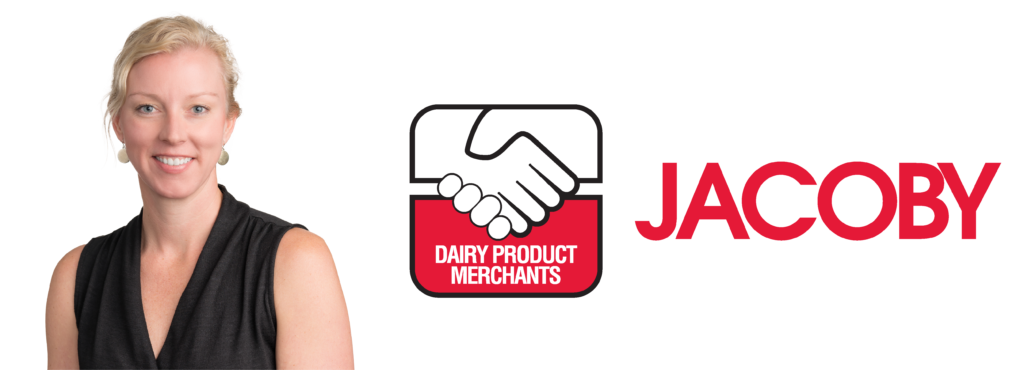
Want a robust supplier network tomorrow? You don’t need to drive across the Midwest. Talk with Brianne Breed, SVP of cheese trading at T.C. Jacoby & Co. You can leverage our network and expertise to meet your procurement goals via a single point of contact.
Age before beauty
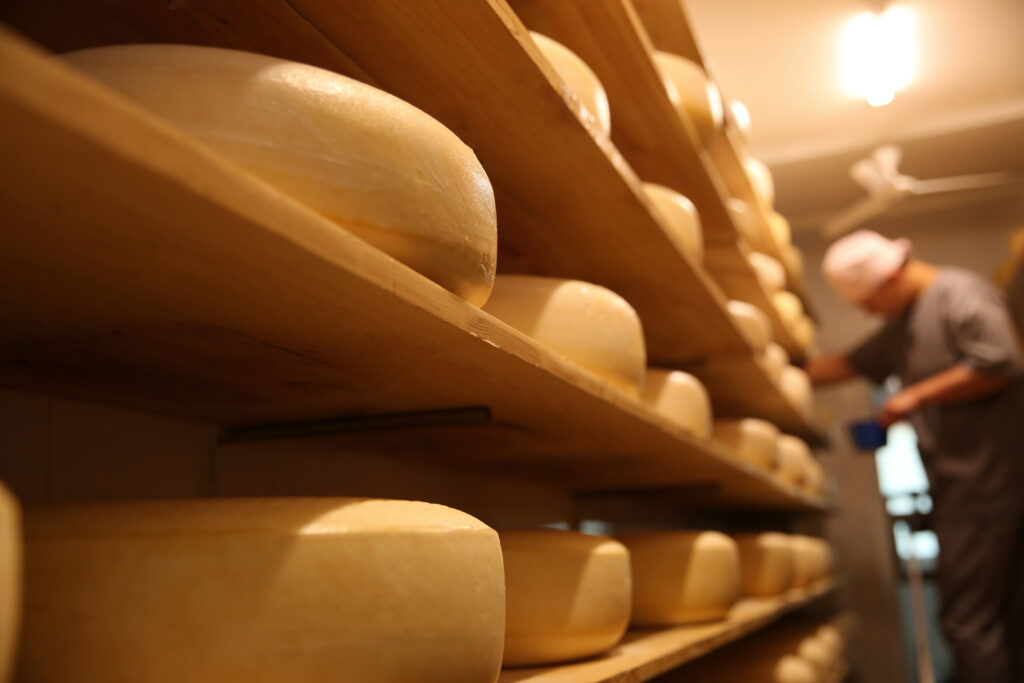
During the cheese aging process, enzymes and friendly bacteria break down proteins and fats. Moisture evaporates, and the flavor becomes more concentrated. However, not all cheese ages gracefully. Only certain profiles are suitable for aging, like Cheddar , Parmesan or Romano. Cheese made with a milled curd is better for aging than a stirred curd. A milled curd will help expel moisture and allow for aging.
All that science comes before you ever touch the cheese or before aging even begins. Once it’s time to age the cheese, the art begins. Everything from aging time and temperature to the particular enzymes and cultures will contribute to texture and flavor.
It’s equal parts delicate science and unpredictable art. To promote the growth of the right microorganisms within the cheese without allowing the cheese to spoil requires attention to temperature and humidity.
Greg has learned the science and the art through experience. There’s a wealth of information out there, and we can help you navigate it. The process is highly precise and specific for each cheese. In the meantime, here’s general rules of thumb:
- Some cheese ages better than others as friendly bacteria and microbes continue to develop the cheese.
- Some cheeses are surface-ripened by rubbing the surface with washes for aging. Others are interior ripened by preserving the exterior with wax or cheesecloth, for example.
- Surface-ripening cheeses release ammonia and require ample oxygen to age properly, so proper ventilation will be critical if you plan to age your own.
- Humidity levels, timeframes and curing temperatures vary for different cheese types. For example, Parmesan is typically aged at higher humidity and cooler temperatures than Cheddar. The specification mandates a minimum aging period for Parmesan.
- Most cheeses are ripened with high humidity at around 50 degrees Fahrenheit. Cooler temperatures limit microbial activity and usually result in milder cheese.
- The chemical composition of the “green” cheese sets the stage for the aging process.
This process is performed by experts and varies greatly depending on the type of cheese.
The best pizza ever?

Mozzarella cheese is hugely popular in the United States, mostly because it’s used for pizza. But what’s the best type of mozzarella for pizza? As with nearly everything, it depends on who you ask. Following are several characteristics to consider for your best-ever pizza.
- Some people like pizzas with browned and coarse cheese. They don’t like their cheese to have much stretch. A cheese with low to moderate moisture content, low acidity, and low brine could help them achieve this result. Other people want pizza cheese with a lot of stretch. Stretchy cheese has very little brine, a high moisture content, and mild acidity.
- Another factor to consider is the fat content of the mozzarella. Mozzarella can leave oil on pizza. “I’ve seen people take napkins and dab the top of a pizza just to get that oil off. I personally like the full fat; I like the oil on top when I eat.” If you don’t like the oil, choose cheese made from skim milk.
- The cheese format – whether it’s sliced or shredded – also determines how it will bake. For example, many pizza places don’t use shredded cheese. They use slices, which helps achieve a uniform cheese layer. Others prefer a fine shred to achieve the coverage they want. Some don’t want the cheese to fully cover the pizza. If you prefer gaps in your cheese coverage, consider coarse shredded cheese.
Which is best? Ask 20 people, and you may get 20 answers. It’ll depend on what you’re trying to achieve. Or maybe just ask your spouse what kind of pizza they want. And if you need help locating that perfect cheese, let us know. We can help.
In conclusion, love the players, love the game
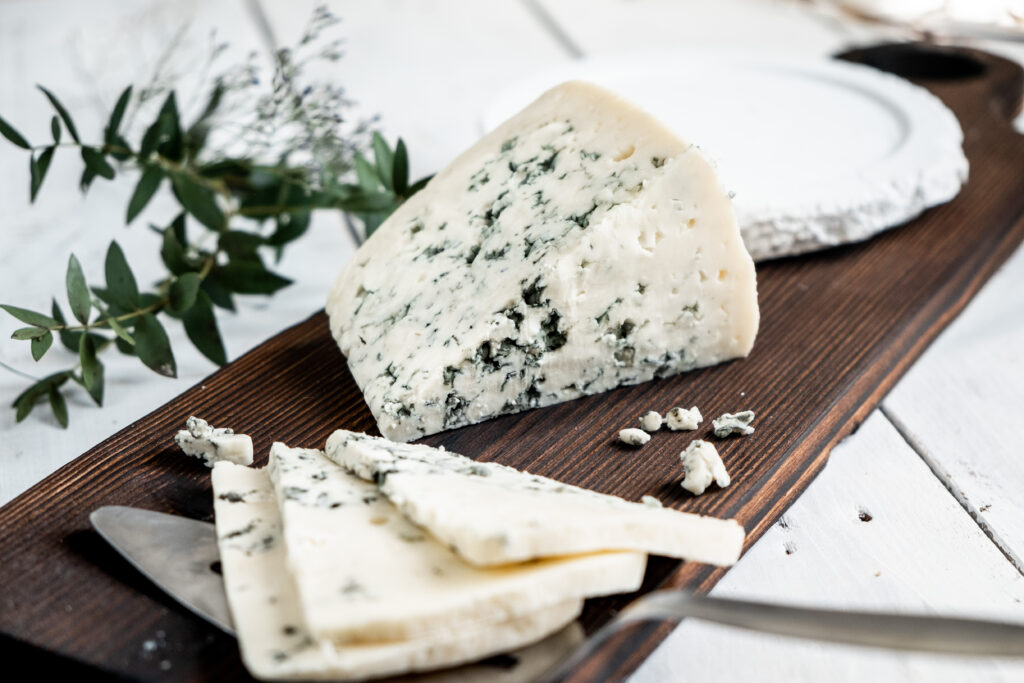
I love this business so much, I don’t know if I’ll ever retire, truly,” says Greg. Once, when a manufacturer commented on his thorough knowledge of their cheese, he said, “I was in and out of your coolers all the time back when I was a cheese grader. You could probably turn off the lights, and I could walk around and not run into anything.”
You won’t be able to develop that understanding in a day. So, tap into ours. We know the ins and outs of dairy production across the U.S. and beyond and can put this experience to work for you. Just reach out, and we’ll talk about your procurement goals.
Depending on what you need, we may even get Greg involved. It’s clear he has no intention of retiring any time soon.
